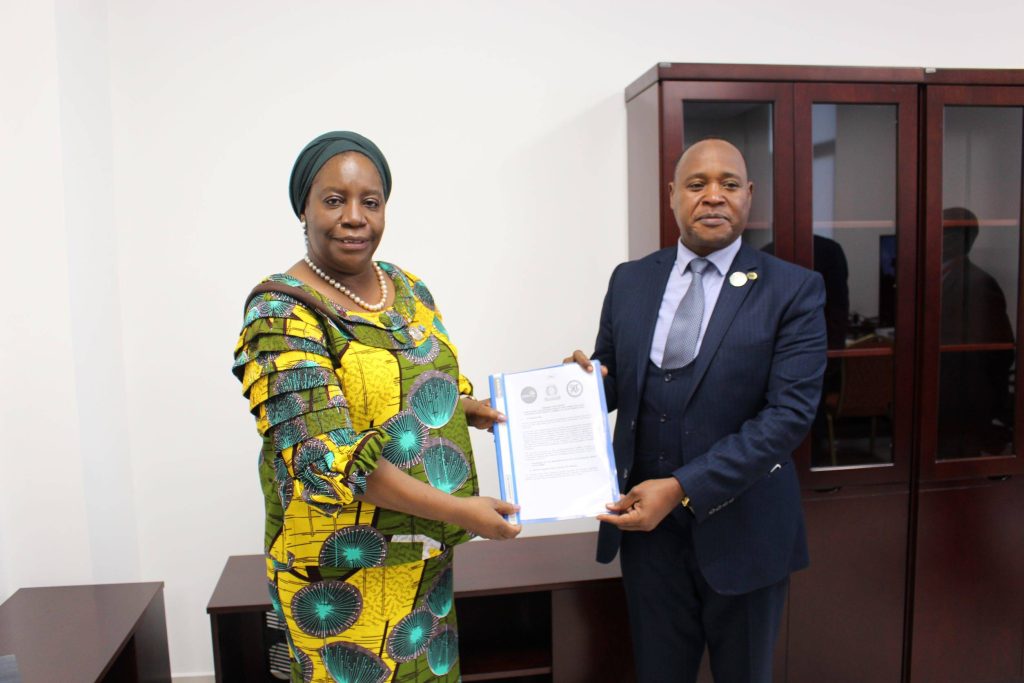LUSAKA-The Tripartite Free Trade Area [FTA] Agreement that brings together COMESA, East African Community [EAC] and the Southern African Development Community [SADC] Tripartite Free Trade Area [TFTA] has been hailed as a good model for regional integration.
This followed a presentation on the success of the Tripartite FTA at the just concluded African Union [AU] Mid-Year Summit held in Zambia, early this week.
Among the key highlights was TFTA’s tariff liberalisation coverage, which is now at 100 percent and takes into account general, specific, and security exemptions provided for under the existing regional economic communities [REC] / Regional and Multilateral agreements.
Further, over 90 percent of the TFTA list of Rules of Origin have been agreed upon and what remains are the textiles and automobiles, and there is an established mechanism for managing the transition.
The success of the Tripartite FTA were presented to the Summit by the Secretary General of the EAC Dr. Peter Mathuki on behalf of his COMESA and SADC counterparts.
The Tripartite is based on a developmental integration approach built on three pillars namely: Market Integration, Infrastructure Development, and Industrial Development. It is acclaimed for its well-established, tested and successful modalities for the negotiation processes with clear structures, rules and guidelines.
The African Continental Free Trade Area, (AfCFTA) negotiations drew many lessons from the Tripartite process in terms of the modalities and instruments for negotiating trade in goods, including the principles, texts, annexes, and general architecture.
The Tripartite FTA also provides a Framework for addressing multiplicity of memberships to various RECs, which is a challenge in regional integration. For instance, the Southern Africa Customs Union [SACU] and EAC Customs Unions have exchanged tariff offers that average 90 percent of their tariff books to be liberalized immediately. Most Tripartite Member/Partner States have carried over the level of tariff liberalization in their respective RECs to the Tripartite.
The Tripartite FTA has a fully functional online Non-Tariff Barriers [NTBs] reporting, monitoring, and NTBs resolving system ready for integration into the AfCFTA framework.
Under its Infrastructure Development Pillar, several transit and transport facilitation instruments have been developed and are already operational within the Tripartite Region, while under the Industrial Pillar, plans are underway for the development of Tripartite agro-processing value chain and establishment of trade logistics hubs. This is intended to remove fragmentation by promoting regionally integrated industries and supply chains.
Reacting to the Tripartite report the President of the D R Congo Felix Tshisekedi said: “Everything should be done to sensitize those countries within the three blocks, that have not ratified it to do so,” Tshisekedi said.
The Tripartite FTA was signed in 2015 and comprises 29 countries: representing 53 percent of AU membership; more than 60 percentof the Africa Continental GDP [US$1.88 Trillion; 2019]; and a combined population of 800 million.
To date, 22 of the 29 Tripartite Member States have signed the TFTA Agreement. It will come into force once ratified by 14 Member States. Thus far, only 11 countries have ratified [Egypt, Eswatini, Kenya, South Africa, Rwanda, Burundi, Uganda, Botswana, Namibia, Zambia, and Zimbabwe]. Three ratifications are needed in order to enter into force.
COMESA Secretary General Chileshe Kapwepwe took over the chair of the Tripartite Task Force on July 16, 2022. She undertook to lead ratification missions to select countries in the region to ensure the threshold was attained before the end of this year and Agreement enters into force.
Buy your copy of theCooperator magazine from one of our countrywide vending points or an e-copy on emag.thecooperator.news
